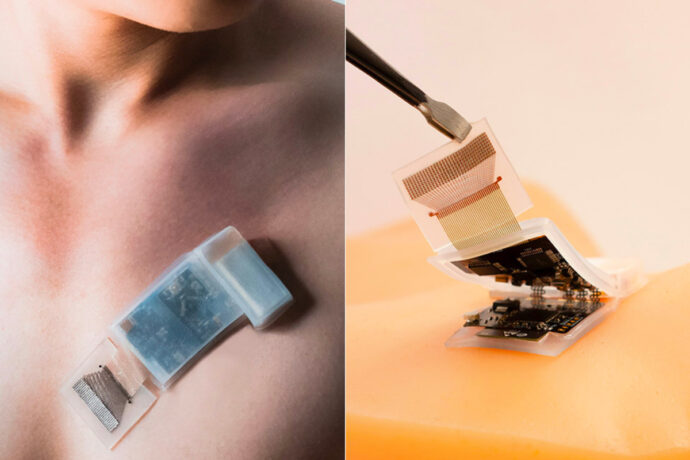Technology

Empowering Sensors: MIT’s Battery-Free Energy-Harvesting System
MIT researchers have introduced a groundbreaking battery-free sensor that can operate in remote environments by harnessing energy from its surroundings. This innovative technology promises a wide range of applications, from monitoring ship engines to enabling cost-effective diagnostic sensors. 1. Battery-Free Sensor Design: The developed sensor eliminates the need for batteries by harvesting energy from ambient […]
Read More
Redefining Precision: Stanford’s Breakthrough Microcomb Technology
Stanford researchers have introduced a groundbreaking microcomb, a compact and energy-efficient frequency comb with unparalleled accuracy. Published in Nature, this innovative device holds the potential to revolutionize various industries, including electronics, with its remarkable capabilities. 1. Introduction of Microcomb Technology: The newly developed microcomb represents a significant advancement in frequency comb technology, offering high precision […]
Read More
Revolutionizing Lightweight Materials: The Era of Micro-Lattice Cellular Material
Styrofoam, once considered lightweight, pales in comparison to the groundbreaking micro-lattice cellular material developed by a collaborative team from UC Irvine, HRL Laboratories, and Caltech. This new material, composed primarily of metal, boasts unparalleled lightness and a myriad of potential applications. 1. Unprecedented Lightness: The newly developed micro-lattice cellular material surpasses Styrofoam, being 100 times […]
Read More
Unveiling the Future: Advancements in Affective Computing
In an era where technology is increasingly intertwined with human emotions, the burgeoning field of affective computing holds immense promise. Recent research delves into the progress and future trajectories of this interdisciplinary domain, offering insights into its applications and ethical considerations. 1. Affective Computing Overview: Affective computing integrates various disciplines to enable machines to perceive, […]
Read More
Advancing Healthcare: Caltech’s Pioneering Photoacoustic Vector Tomography
Understanding blood flow dynamics within the body is crucial for diagnosing and treating various health conditions. However, deep-seated blood vessels pose challenges for traditional imaging techniques. Caltech’s latest innovation, Photoacoustic Vector Tomography (PAVT), offers a breakthrough solution for noninvasive imaging of deep blood vessels and detailed analysis of blood flow dynamics. 1. Significance of Blood […]
Read More
Pioneering Continuous Organ Monitoring: MIT’s Ultrasound Sticker
A groundbreaking innovation from MIT engineers has paved the way for continuous monitoring of organ stiffness through a tiny ultrasound sticker. With the potential to detect diseases like liver and kidney failure at early stages, this development marks a significant advancement in healthcare technology. 1. Development of Ultrasound Sticker: MIT engineers have created a postage […]
Read More
Revolutionizing Wireless Sensor Technology: A Breakthrough in Microelectronics
In a groundbreaking development led by engineers at Brown University, a new method has been unveiled that promises to propel the advancement of wireless sensor technology. This innovation holds immense potential for the integration of thousands of minuscule sensors into implantable and wearable biomedical microdevices, heralding a transformative era in data collection and interpretation. 1. […]
Read More
Exploring Sustainable Alternatives: Beyond Lithium Batteries
The surge in global demand for batteries, driven by the need to electrify vehicles and store renewable energy, has spotlighted the environmental drawbacks of lithium-ion batteries. While lithium batteries dominate the market, concerns about their recyclability, water-intensive extraction process, and environmental impact have spurred innovation in search of greener alternatives. This article examines emerging battery […]
Read More
Exploring the Dual Nature of AI in Elections: Threats and Promises
The rise of artificial intelligence (AI) has sparked concerns about its potential to disrupt elections and undermine democratic processes. Amidst warnings of AI-generated deepfakes and foreign interference, efforts to harness AI for positive democratic outcomes often go unnoticed. This article delves into both the risks and opportunities associated with AI in electoral contexts, highlighting the […]
Read More